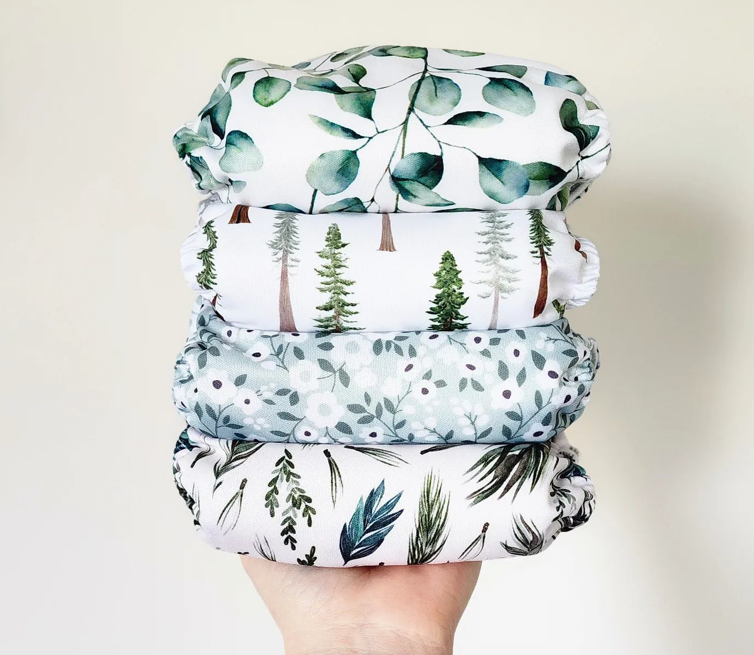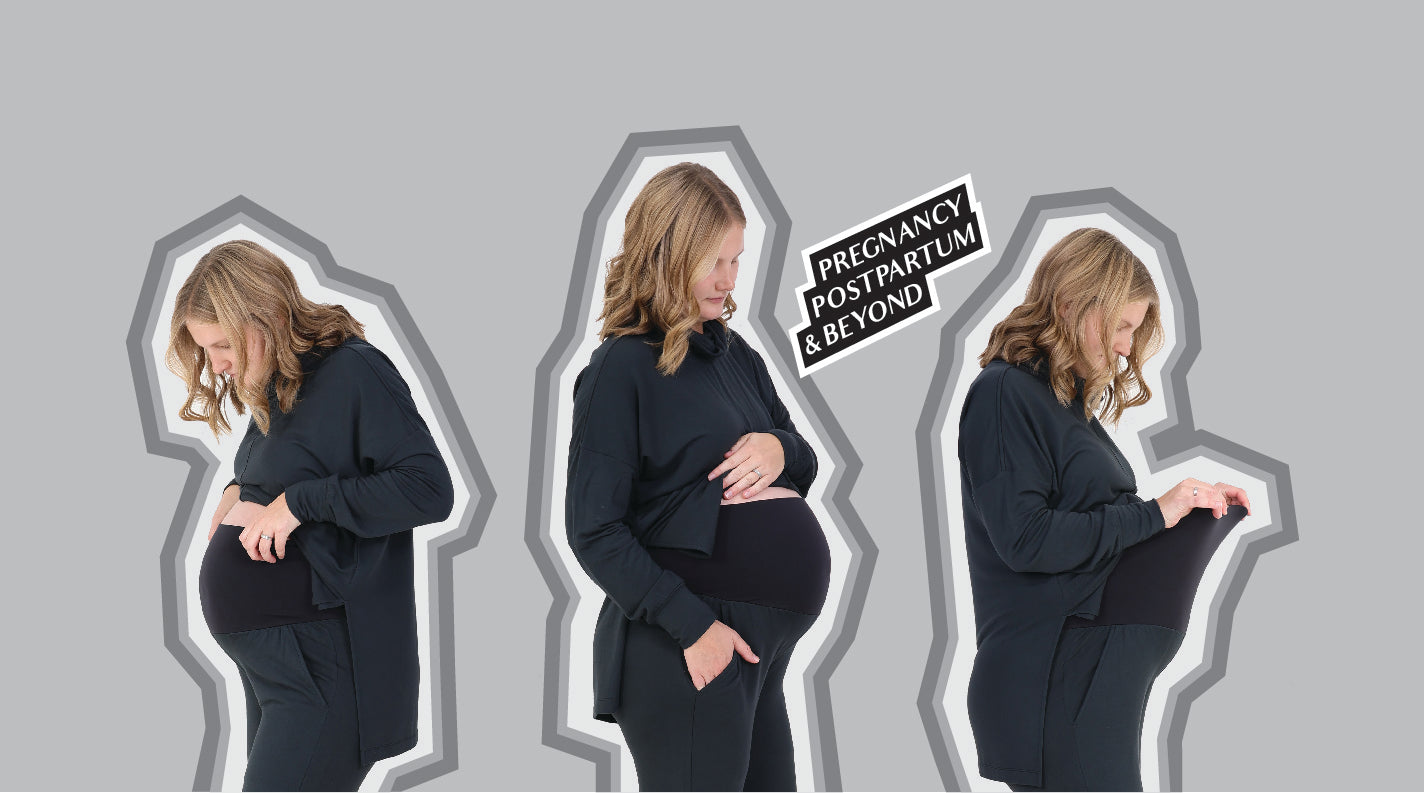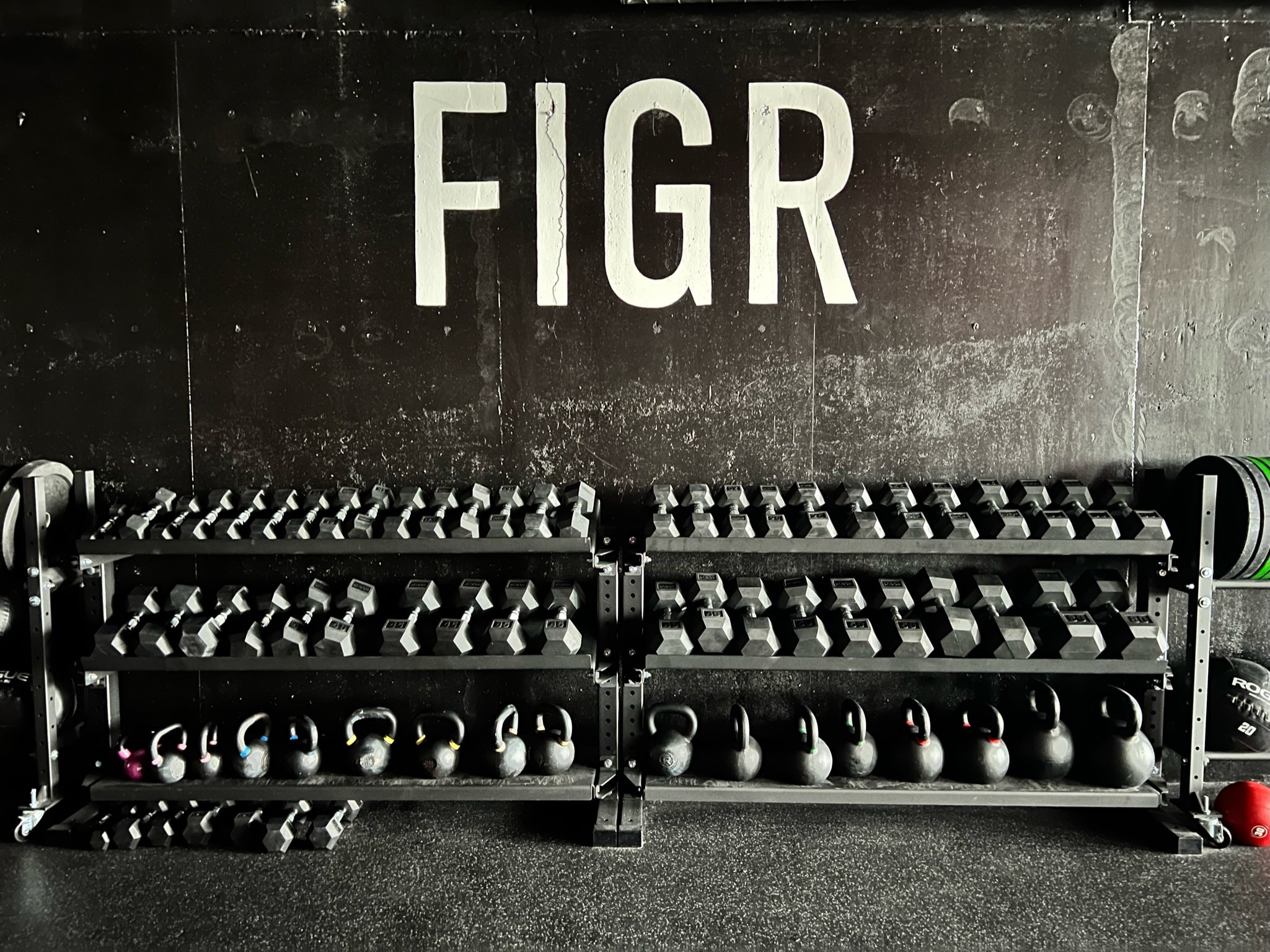
CURIOUS ABOUT CLOTH?
A Guide for Those New to Cloth Diapering.
Written By: Beth B
Are you thinking about cloth diapering, but don’t know where to start? There is no shortage of information out there and it can seem overwhelming at times. Maybe your considering cloth for economic reasons, maybe environmental or health reasons. Perhaps you are just curious and want to try them for your little one. There are many whys when it comes to choosing cloth, but no matter your why, this guide will give you the basics of cloth diapering and hopefully a sense of direction as you embark on the journey.
First things first: there is no wrong way to start.
- Part-time
- Full-time.
- Any time is a good time.
Choose the pace that best fits you and your lifestyle. Going at your chosen pace will set you up for success.
Now, it may be tempting to find a brand with cute prints and buy a whole stash, but I’d strongly encourage you to try different styles of diapers first, before investing too much time and money in one brand (I speak from experience on this one!) More small cloth diaper businesses are now offering starter packs where you can try diapers and inserts at a reduced cost. Subscription services can also be a good way to test styles. BST groups on Facebook are popular for grabbing good deals, if previously loved diapers don’t bother you. Welcome codes and rep codes are a good way to save a bit as you find what works for your babe. Once you have a good idea of what you like and what works, there are some fabulous times during the year to build your stash.
- Earth Day
- Black Friday
- Anniversary/Birthday sales
Remember that you don’t need a million diapers to start out. A stash of 24-36 diapers is a good-sized stash for washing every other day or every 2 days. Of course, you can start with less too, depending on your situation. It’s a good rule of thumb to change your babe’s diaper at least every 2 hours to avoid leaks. Keep in mind too that the absorbency needs of your child will change as they grow. Younger babies will go through more diapers per day than older children.

(image above from Beth @little.bit.of.cloth)
CLOTH DIAPER SYSTEMS
ALL IN ONE DIAPERS
Perhaps the most straightforward cloth diapering system is the all-in-one diaper. This diaper has the absorbent portion either sewn or snapped into the waterproof portion. BENEFITS: This is a great option if ease of use is your primary goal. It’s also great for caregivers as it is the style most like a disposable diaper. Easy on, easy off. No fuss. KEEP IN MIND: All-in-one diapers are usually the most expensive option because the most convenient. They also tend to take longer to dry because of all the included absorbency.
POCKET DIAPERS
Pocket diapers are easily one of the most popular cloth diaper styles. In fact, pockets make up the majority of my stash. Pocket diapers are just as the name suggests: they contain a pocket in the back of the diaper (and sometimes in the front or both!). Absorbency is then stuffed inside the pocket. When it’s time for a change, the absorbency must be pulled out so that both pieces can be thoroughly washed. BENEFITS: Pockets are quite affordably priced because absorbency is usually not included. You can stuff them with many different things, such as inserts, flats, hand towels, receiving blankets, even old t-shirts! Once stuffed they are similar to an all-in-one in that they are easy on and easy off. KEEP IN MIND: Pockets are slightly more time consuming as they must be stuffed before use and then taken apart before washing. This extra time and effort may not appeal to some. Personally, I find stuffing pocket diapers to be quite relaxing.
For pocket diapers I love Redwood Cloth. They have beautiful pocket diapers, plus different inserts and accessories. Mama/military spouse owned. Use code littlebit10.
FLAT DIAPERS
Flat diapers are the OG of cloth diapering. A large piece of fabric that can be folded and wrapped around baby for 360-degree coverage and absorption. Flats worn this way will require a waterproof cover. Flats can also be used simply folded into a rectangular shape and placed inside a pocket diaper or a waterproof cover. Cotton, bamboo, and hemp are some of the fabric options with flats – even the ultra-affordable flour sack towel can be used! BENEFITS: Flat diapers are classic for a reason. Unmatched ease of cleaning and drying. They can also be repurposed after your diapering days are over for cleaning rags, etc. KEEP IN MIND: Flats can be intimidating at first, but don’t let that keep you from trying them! Also, because of the superior natural fiber blends, as well as the printed and specialty dyed options available, flats can run on the pricier side.
For flats, contours, and preflats I love Little Blue Cloth Co. Her preflats have been my go-to nighttime setup for my daughter for months now. No leaks. Use code LITTLEBIT saves 10% on your first order.
FITTED DIAPERS
Fitted diapers are made entirely of absorbent material. They can come with snaps for easy fitting on baby, or without snaps to be fastened with pins, etc. They are great for heavy wetting babes and are good for preventing leaks. Because totally absorbent, they also require a cover to be waterproof. BENEFITS: These diapers are easy to fit and typically quite absorbent. They are a very good option for overnight protection. KEEP IN MIND: Fitted diapers tend to cost more because of the amount and type of fabric used.
FLEECE AND WOOL COVERS
Fleece and wool covers are great options for a plastic free approach to cloth diapering. They allow for breathability and superior softness against baby’s skin. These covers are used over flats and fitted diapers to discourage leaking and the sock marks that plastic covers can sometimes leave on chubby thighs. Fleece and upcycled wool covers are affordable and make for a great diapering option, especially at night or in cooler temperatures.
INSERTS
There is a wide variety of inserts available for your cloth diapers. A diaper is really only as good as the absorbency you put in it. Microfiber inserts or bamboo charcoal (not really bamboo), can often lead to compression leaks. Microfiber is quick to absorb, but cannot hold as much liquid. Bamboo, cotton, and hemp blends are better quality inserts that will serve you well for the length of your cloth diapering journey. BENEFITS: Inserts are easy to use in pocket diapers or covers, or even as additional absorbency in all-in-one diapers. Natural fiber inserts will hold a decent amount of wetness without leaks. They can also be doubled up if baby needs more protection. KEEP IN MIND: Inserts can come in layers of 3, 4, 5 and 6. The more layers the more absorbency (score!), but they might also take more time to get really clean and dry with so many layers.
For years I have used and loved the pocket diapers and trifold inserts and wetbags from Pannolino Bambino. Mama owned.
Having a varied stash is super helpful as your child grows and changes. So don't be afraid to mix it up!
BUT WHAT ABOUT THE POOP???
Probably the most commonly asked question of cloth diapering parents.
It's simple, really
Flush solids down the toilet.
That's it?
Yes.
And actually, that step applies for both cloth and disposable diapers. Waste should never be thrown out in the trash. Think about it.
A diaper sprayer is a great investment that I highly recommend. It will make cleaning messy diapers so much easier. Then everything can be tossed in a wet bag/diaper pail/laundry basket for wash day.
Honestly, your wash routine will be the most important thing when it comes to cloth diapering, but it can often be the most frustrating aspect of cloth (I can attest to this) It may take trial and error to get it right, but it will be worth it.
Give yourself grace.
Figuring out the interplay between your machine, your water, and your detergent might take some time. A typical routine might look as follows:
- Regular wash on cold or warm with little or no detergent
- Long wash on heavy cycle with detergent
- Extra rinse
- Dry on low heat (to extend the life of your diapers you might consider hanging dry the waterproof parts and machine drying the inserts only.)
That’s it. It’s just laundry. Don’t overthink it.
(image above from Beth @little.bit.of.cloth)
The diaper sprayer I recommend is from Purrfect Zone. Easy to install and can double as a bidet. I use my diaper sprayer with this stand that I got from Amazon. Highly recommend. Spray Pal also has an option that seems a popular choice.
Cloth diapering is not all or nothing.
You can do it part time if that is best.
You can use disposables on trips, or if you just need a break.
Cloth diapering, like many aspects of parenthood, requires an open mind and flexibility. Learning curves are a part of the experience. They don’t call parenthood an adventure for nothing! My hope is that this guide has inspired and encouraged you to try cloth diapering. It really is a rewarding experience with many awesome benefits. Oh, and your child will have the cutest diapers around!




Leave a comment
This site is protected by hCaptcha and the hCaptcha Privacy Policy and Terms of Service apply.